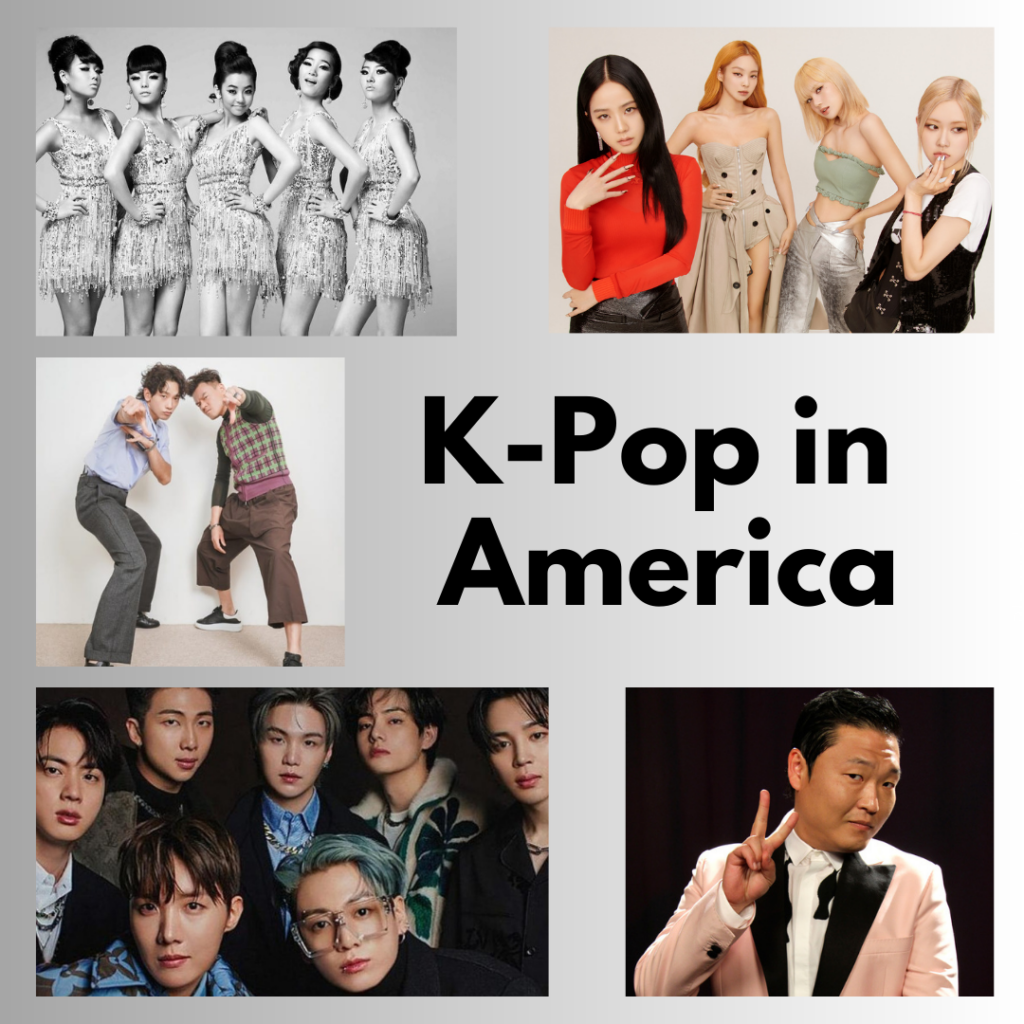
K-pop is truly everywhere right now. The genre, tracing its official beginnings in the 90s, has steadily grown in its appeal over the past couple of decades. In this series, I would like to showcase this genre’s growth in the American cultural sphere, from early millennium trailblazers like JYP to record-breaking juggernauts of today like BTS. But before we can dissect its growth into the global public consciousness, we must first explore its roots at home, as well as guide any newcomers to the genre currently reading. This section should serve as a guide of sorts to the numerous traditions, aspects, and quirks of the K-pop sphere that many might be unaware of.
A Bit of History
Modern K-Pop, as we know it, started taking its form in the 90s, most notably with the debut of Seo Taiji and Boys in 1992. The trio, consisting of Seo Taiji, Lee Juno, and Yang Hyunsuk (also known as the founder and CEO of YG Entertainment), blew up with their debut self-titled album in the same year.

Then in 1995, Lee Soo-Man founded music company, and eventual long-standing powerhouse, SM Entertainment. It utilized mechanics from J-pop and Western music and popularized it in Korea to create the current K-Pop foundations still seen in use today, such as the idol image and system, the trainee system, groups, and even the types of music utilized in popular releases.

Since then, the genre has grown in spades both at home and abroad, with generations of talented and popular artists
A Short Guide to K-pop Vocab
For a basic guide into the genre and its unique verbiage:
- Generations
- The K-pop timeline is divided into what’s currently referred to as 4 Generations by fans, not officially recognized by companies, but still used for marketing
- Groups/Artists are divided into these generations by the year of their debut, with some room for interpretation for some years
- 1st Generation, 1990’s-2002
- Notable Groups/Artists: HOT, g.o.d, SES, BoA
- 2nd Generation, 2003-2011
- Notable Groups: Super Junior, Girls Generation, Wonder Girls, Big Bang, SHINee
- 3rd Generation, 2012-2017
- Notable Groups: BTS, Twice, Blackpink, Seventeen, Red Velvet
- 4th Generation, 2018-Now
- Notable Groups: Stray Kids, ITZY, TXT, Aespa, ATEEZ
- 1st Generation, 1990’s-2002
- Companies
- There are tons of K-pop companies with many artists and groups signed to them, similar to major record labels here in the West.
- We will focus on artists from what are known as the Big 4 companies: SM, YG, JYPE, and HYBE
- Notable groups from each:
- SM
- Girls Generation (SNSD)
- SHINee
- Red Velvet
- NCT
- YG
- Big Bang
- BlackPink
- 2ne1
- JYPE
- 2PM
- Twice
- Wonder Girls
- Stray Kids
- HYBE
- BTS
- Seventeen
- NewJeans
- SM
- Notable groups from each:
- We will focus on artists from what are known as the Big 4 companies: SM, YG, JYPE, and HYBE
- Legally, artist contracts are a maximum of 7 years long (after a lawsuit against SM back in 2012)
- Most artists start as trainees
- Many start young, sometimes as children
- They train in musical and idol skills in their respective companies for years before they are selected to join a group pre-debut
- Classes for dance, singing, etc.
- There are tons of K-pop companies with many artists and groups signed to them, similar to major record labels here in the West.
- Releases
- After an artist’s debut, each subsequent release is known as a comeback.
- Comebacks consist of ~month-long promotional periods leading up to the project’s release
- This includes promotional images of each member and teasers for the upcoming music video (MV)
- Each comeback is spearheaded by a title track, which is the project’s lead single
- After a release, groups usually spend a week or two performing their title track on music shows before the promotional period officially ends
- Music shows are a big part of K-pop
- They are weekly programs where a promoting artist/group will perform their latest release in front of a live studio audience, and compete against other artists through an online voting system to gain points and win an award
- Some major ones:
- Inkigayo
- Music Bank
- Music Core
- Music shows are a big part of K-pop
- Comebacks consist of ~month-long promotional periods leading up to the project’s release
- Many groups have multiple releases per year
- Most releases constitute of EPs, mostly known as mini-albums (usually less than 8 songs)
- After an artist’s debut, each subsequent release is known as a comeback.
- Major Awards
- Korea has many major music awards that honor the past year’s releases. Some prominent ones are:
- MAMA Awards
- Melon Music Awards
- Golden Disc Awards
- Seoul Music Awards
- Many awards are given at these ceremonies, but the most prestigious are the daesangs, or grand prizes. These include:
- Artist of the Year
- Song of the Year
- Album of the Year
- Artist of the Year
- Korea has many major music awards that honor the past year’s releases. Some prominent ones are:
- Note: Most male Korean citizens are required to enlist for compulsory military service for at least 18 months before the age of 28 (an exemption was made for members of BTS, allowing them until the age of 30 to enlist)
The artists showcased here have been selected due to their influence in the industry and its growth in the West. Some of these may seem very obvious, just about everyone knows who BTS is and how dominant there are, but I also want to shine a light on other influential artists who helped the genre grow into the international powerhouse it is today.


omg i love skz too!!! thank you for mentioning them!
Um, 2nd Gen SHINee though…